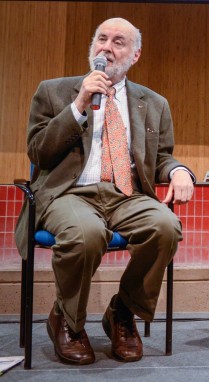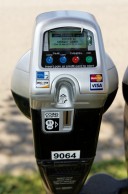
“It’s embarrassing for someone from L.A. to come to Bay Area to give advice on anything,” said Professor Donald Shoup as he opened a March speaking event in Berkeley. Shoup is a Distinguished Professor of Urban Planning UCLA. His lecture, “From Parking to Paradise: An Evening with Professor Donald Shoup,” was organized by TransForm, an Oakland, CA-based nonprofit that aims to create great public transportation and walkable communities.
According to Professor Shoup, the most common myth about free parking is that it’s free. Parking may be free to the motorist he says, because shoppers, business owners, and taxpayers are paying for it. The two greatest mistakes in parking policy, he says, are providing free or cheap parking, and requiring too much of it.
Parking impacts congestion and air pollution and increases the cost of housing, although it’s difficult to quantify by just how much. However, in a recent study published by SAGE Choice, researchers found that higher parking cost was associated with an increased use of public transit in larger cities. Furthermore, the study showed that providing free parking for employees resulted fewer workers utilizing public transportation, and more of them driving alone.
Professor Shoup suggests three parking reforms: 1. Using performance-based parking to determine an accurate and fair price; 2. Spending revenue from parking locally on something that people can see and want; and 3. Reducing off-street parking requirements.
When off-street parking costs significantly more than a spot on the curb, consumers are encouraged to spend time “cruising” for a spot, further contributing to air pollution and congestion. Determining a fair market value for parking is paramount. Under a performance-based parking model, parking rates are the highest on streets that have the highest demand. San Francisco uses modern parking meters that determine the price in real time according to demand: Parking could easily cost .50 cents per hour on one block, and $4.50 per hour a half a block away. Additionally, San Francisco offers a free smartphone app to help drivers search for parking by price and availability. Ideally, Shoup says, parking would be well used but readily available.

Spending parking revenues in a visible and transparent way helps people to understand what they are paying for. Parking can act as a transparent management tool as well as an economic development tool leading to increased sales at local businesses and property tax revenues. The City of Houston launched its first Parking Benefit District in May of last year. The project includes 56 new parking meters in the popular Washington Avenue neighborhood, charging $1 per hour during the day and $2 per hour at night; meters are in effect from 7 a.m. to 2 a.m. The plan calls for 60% of revenue to go directly into neighborhood improvements like landscaping, public safety, or new sidewalks; the rest of the money will go into the city’s general fund.
A study by Jesse London and Clark Williams-Derry of the Sightline Institute showed that among 23 recently completed Seattle-area multifamily housing developments that provided off-street parking, 37% of parking spots remained empty overnight. “Landlords’ losses on parking—calculated as the difference between total parking costs and total parking fees collected from tenants—add up to roughly 15% of monthly rents in our sample, or $246 per month for each occupied apartment,” said the study. Because those losses are usually recouped through rents, all tenants, including those that don’t own cars, end up paying a significant monthly parking fee.
“Zoning requires a space for every car but ignores the homeless. In city planning, free parking has become more important than affordable housing,” said Shoup. And how much parking should be required? Well that’s “just pseudoscience” he said. Minimum parking requirements may seem to be sensible at first glance, but they are based on parking generation rates that typically measure the peak demand for parking observed in a few surveys conducted at suburban sites where free parking is in abundance and public transit is all but nonexistent. Land that is required as off-street parking by local zoning codes could be used for worker housing. The solution is simple, he says: Build housing where there used to be parking lots.
The federal government offers grants for pilot parking projects, but it’s the responsibility of the urban planner to offer a variety of parking solutions to municipalities and private clients. And by making parking more transparent—that is, showing communities how much free parking is costing them, and how much they have to gain from eliminating it—will readily provide economic, environmental, and health benefits for all.
Watch “From Parking to Paradise: An Evening with Donald Shoup” in the video below.
Main image: Christopher Paul/Flickr.